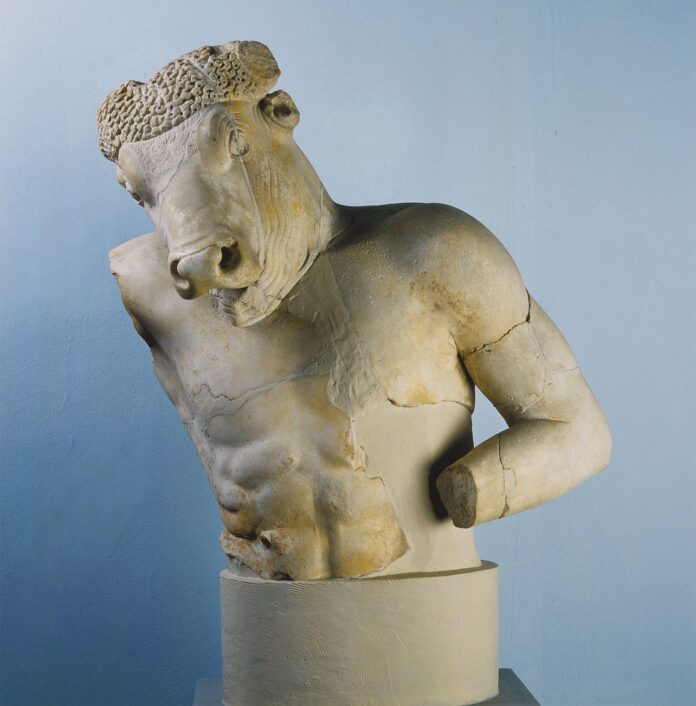It is not often that a museum plays a leading role in one of its own shows, but that is the case with Oxford’s Ashmolean: for its new exhibition of Minoan archaeology and artefacts the museum has dug into the archives of Arthur Evans, its former keeper who was celebrated for his spectacular excavations on Crete at the turn of the 20th century.
Evans is best known for uncovering and popularising Minoan culture, the Bronze Age civilisation that he unearthed in the abandoned Cretan city of Knossos, which he identified as the location of the Minotaur’s labyrinth from classical mythology. The Ashmolean show will contain some of his best known finds, such as fine stone carvings from around 1500BC of vessels shaped like shells, or with octopus reliefs. Many are travelling to the UK for the first time; they will be displayed alongside Evans’s excavation diaries, drawings and pieces that he acquired for the Ashmolean.

Poros Ewer (1500-1450BC) © Hellenic Ministry of Culture and Sports; General Directorate of Antiquities and Cultural Heritage; Heraklion Archaeological Museum
Andrew Shapland, the Ashmolean’s curator of Bronze Age and Classical Greece, says that Evans’s activities proved less controversial than Lord Elgin’s relocation of marble friezes from the Acropolis to the British Museum, with Evans co-operating with Crete’s attempts to gain independence from the Ottoman Empire. “Shrewdly, Evans bought the land and promised not to excavate until Crete became independent,” Shapland says. “And what he found showed there was a complex civilisation in Crete that had links with Greece. It fitted the narrative perfectly.”
Shapland explains how Evans followed the Cretan government’s export rules, which only allowed him to take “duplicate” pieces back to the Ashmolean, and the curator is keen to stress that the exhibition acknowledges that Evans did not actually discover the Knossos site: that honour goes to local archaeologist Minos Kalokairinos. Furthermore, he adds, spectacular new finds are being unearthed all the time by a new generation of archaeologists. “We are trying to link up the different aspects of the excavation: the famous finds that have stayed on Crete, and the archive we have here,” Shapland says. “We are really showing that the story continues.”
• Labyrinth: Knossos, Myth and Reality, Ashmolean Museum, Oxford, 10 February-30 July














![What Happens When Things Get a Little Tense Between Artists? [Cartoon]](https://usaartnews.com/wp-content/uploads/B8NB4hPqzQoNO82e8LNPzpKyc7tQYlu4xgG0npba-80x60.jpg)










